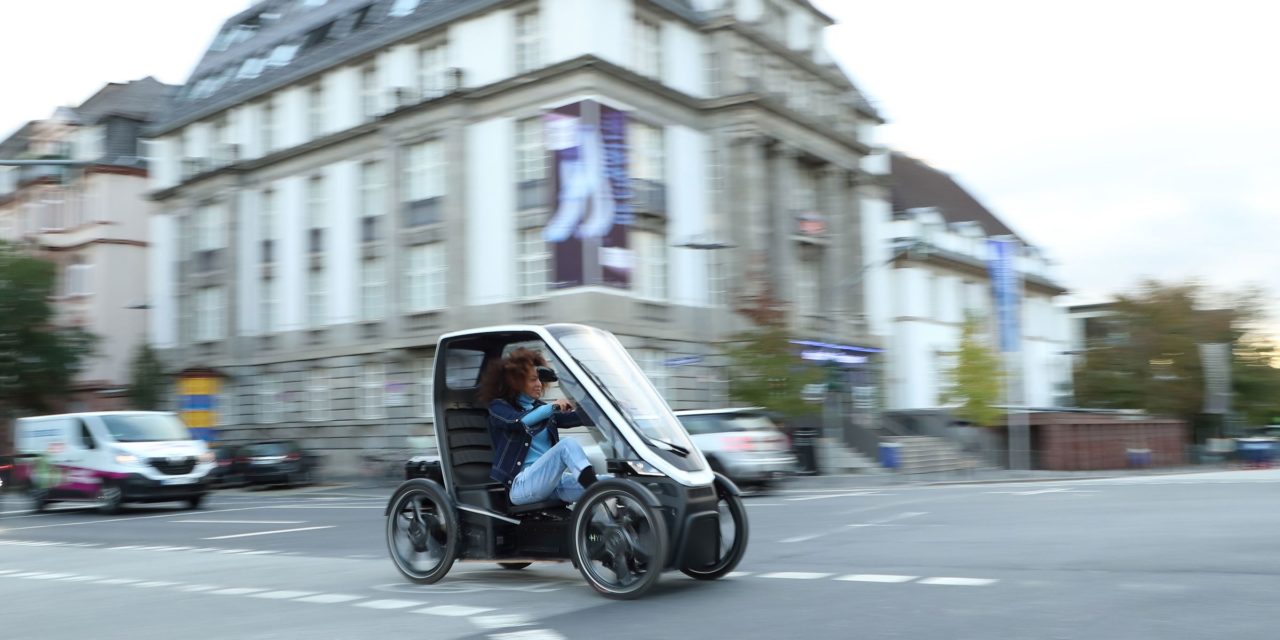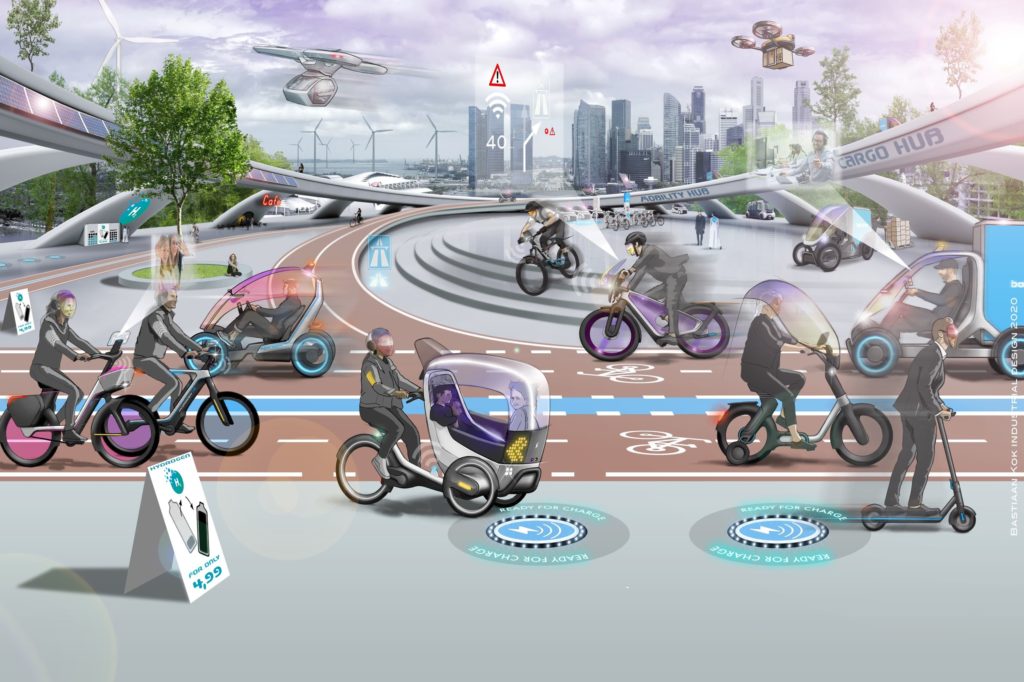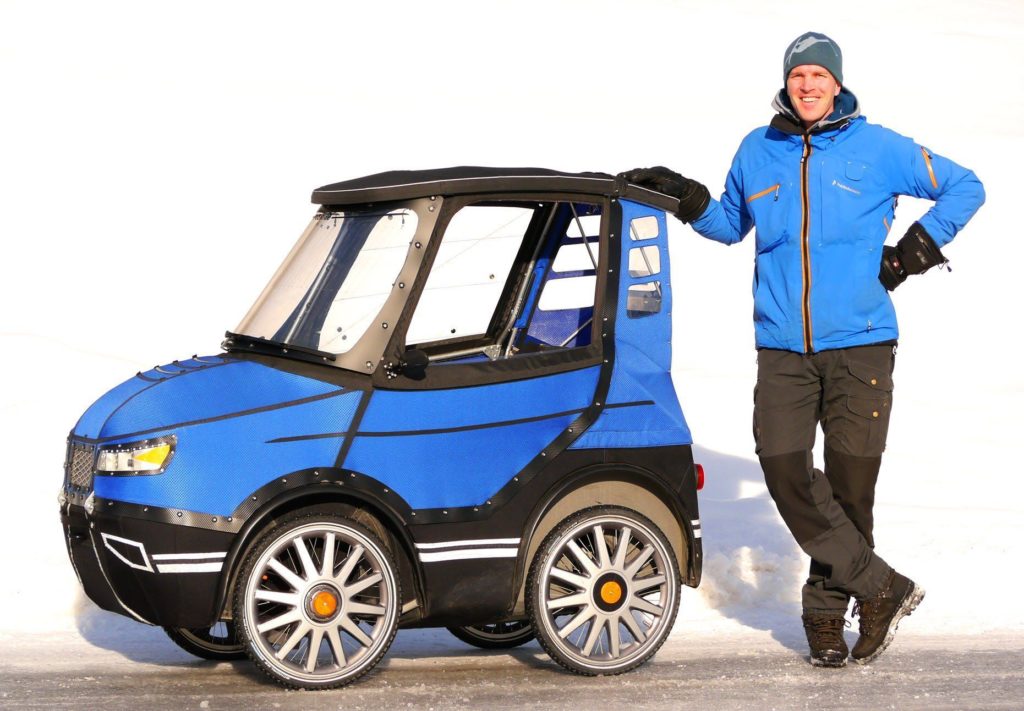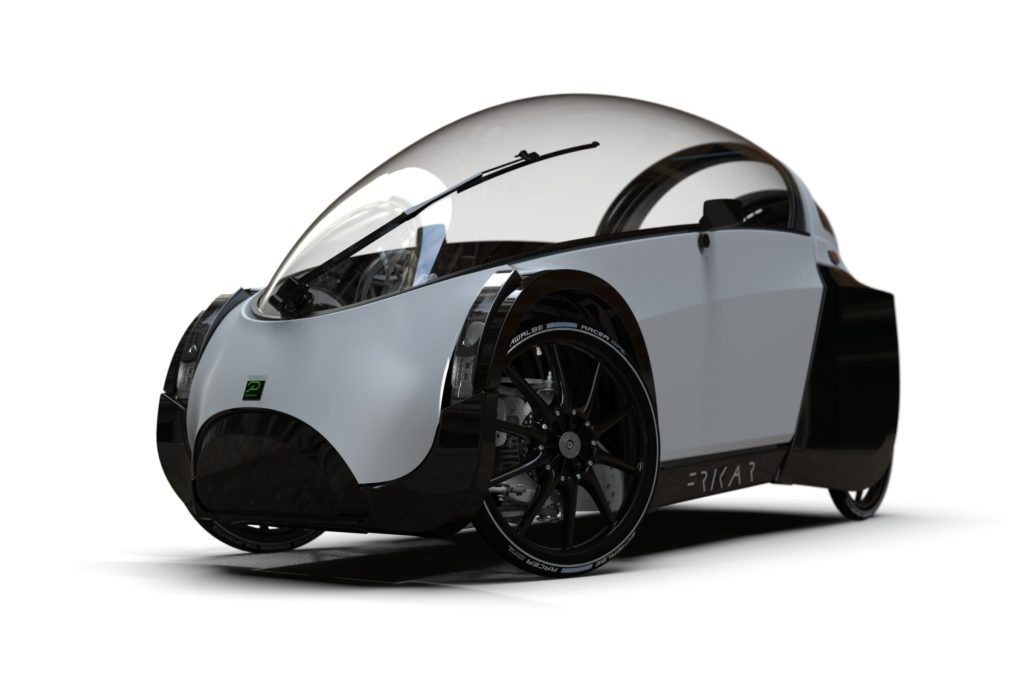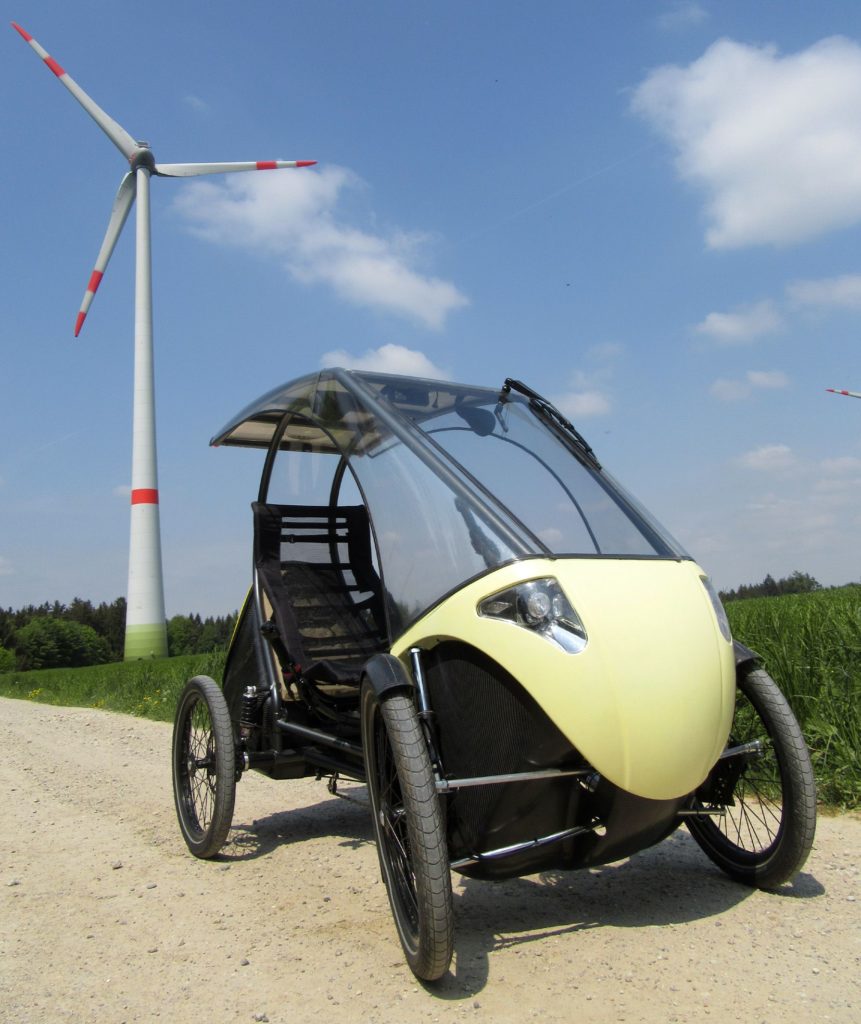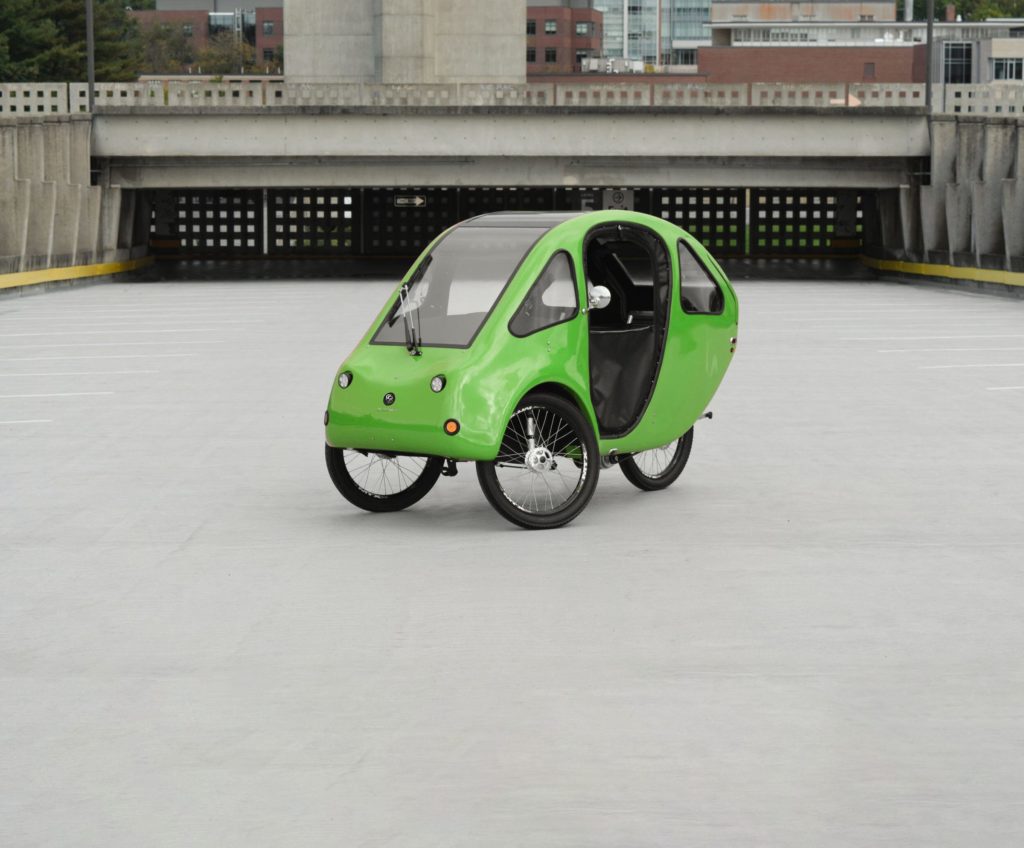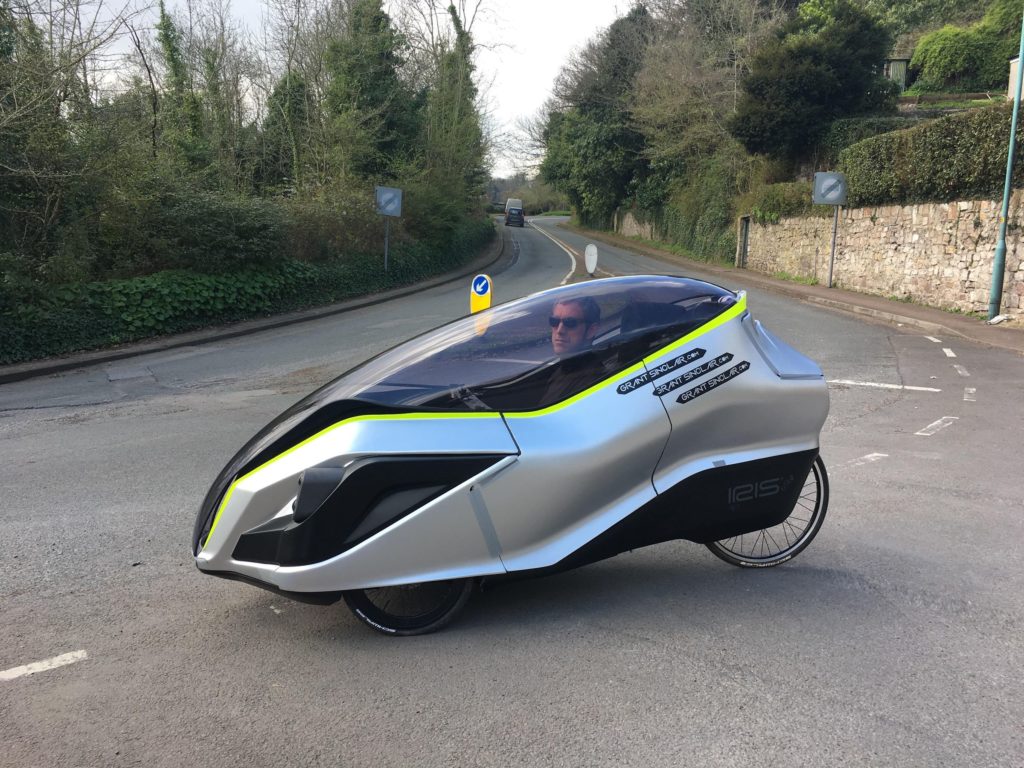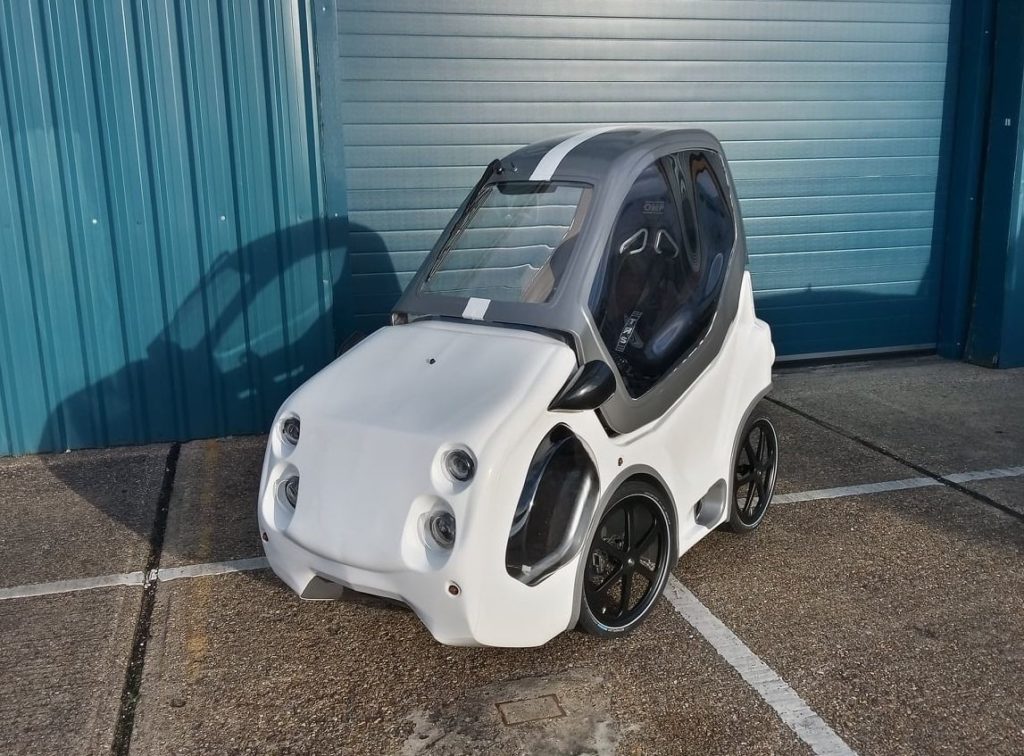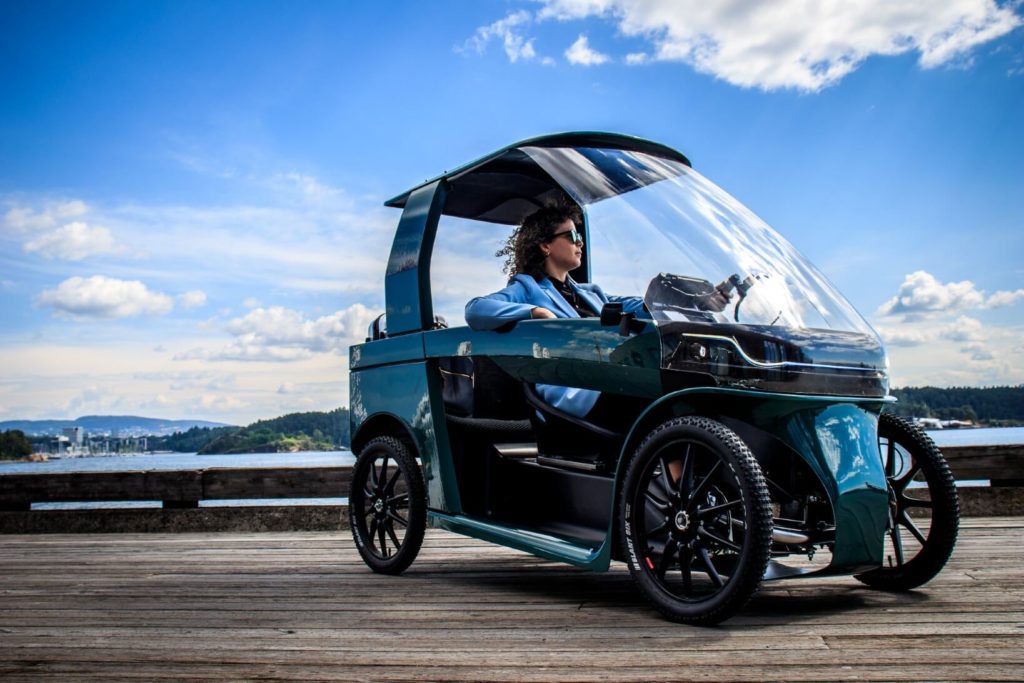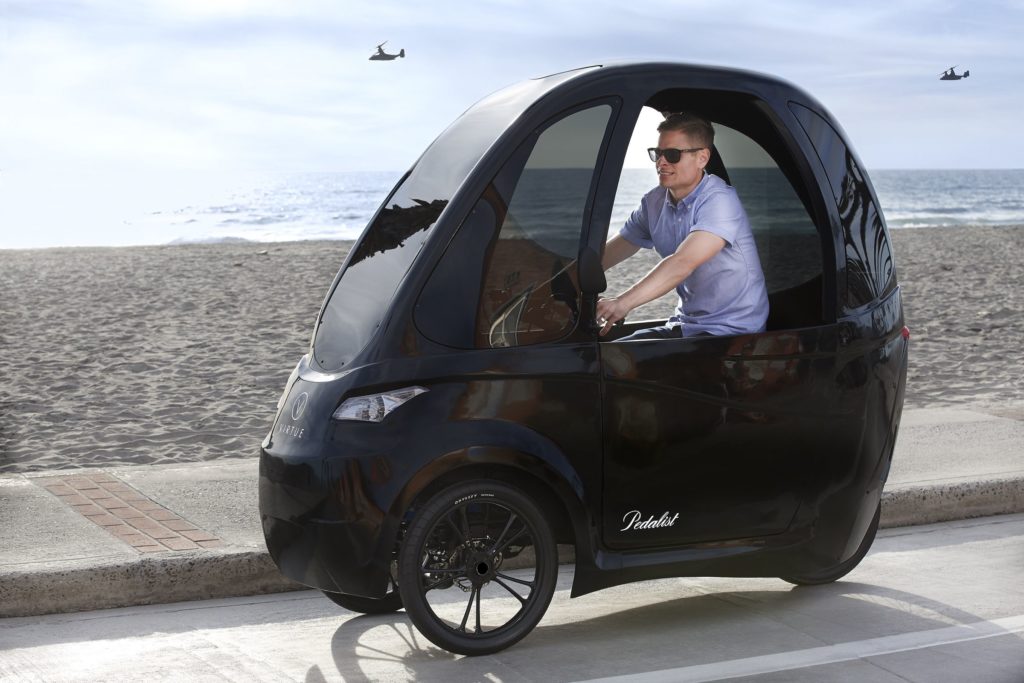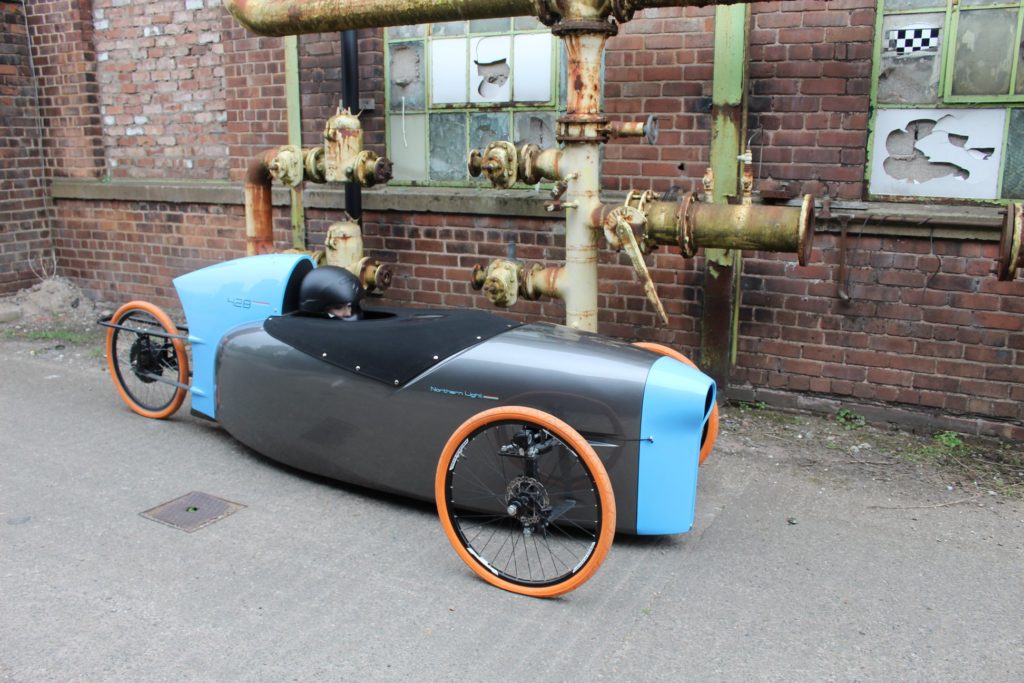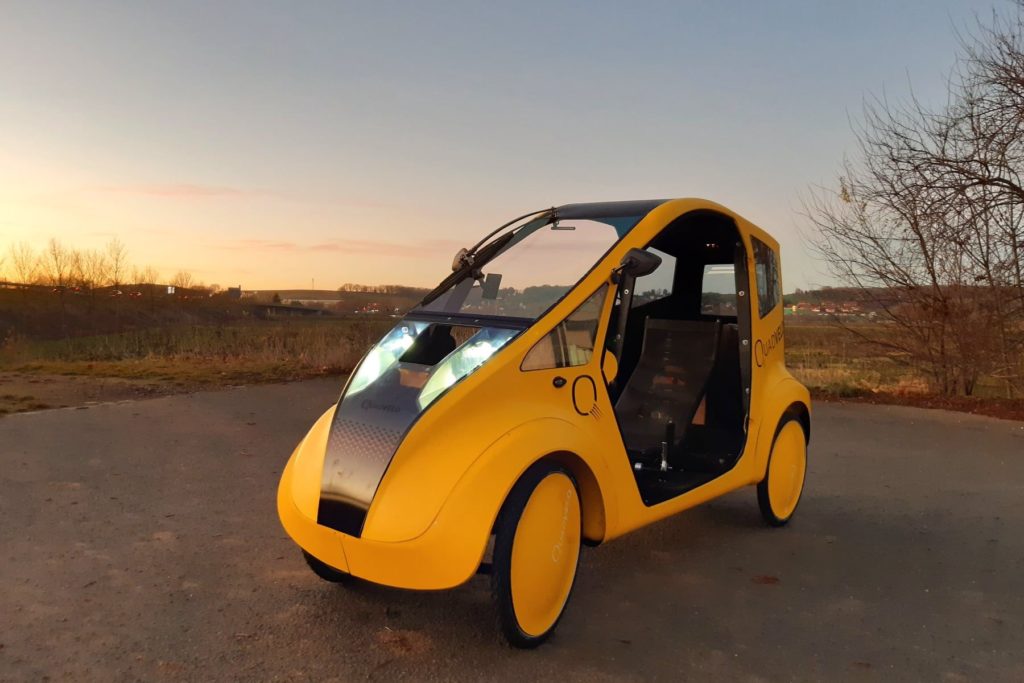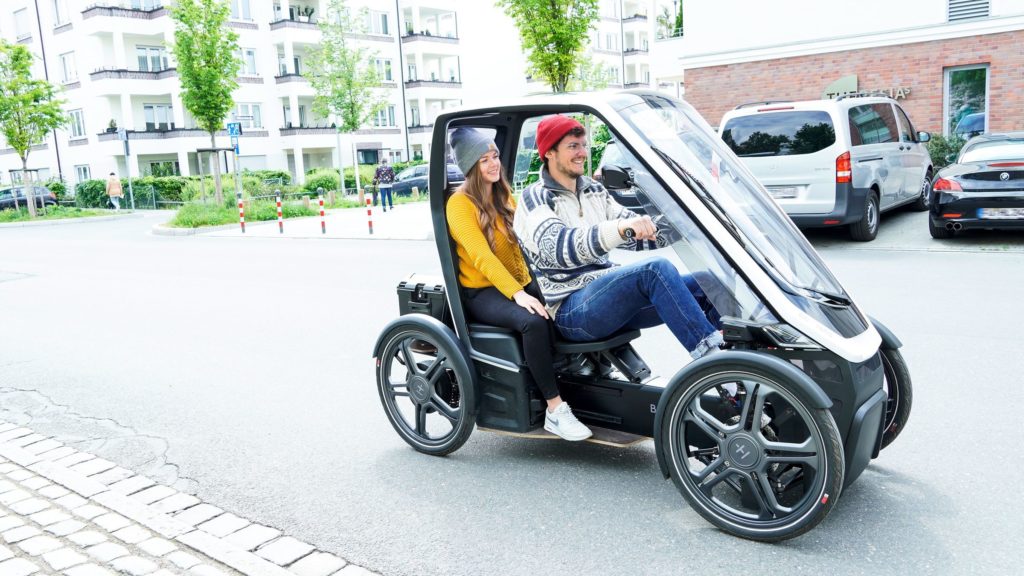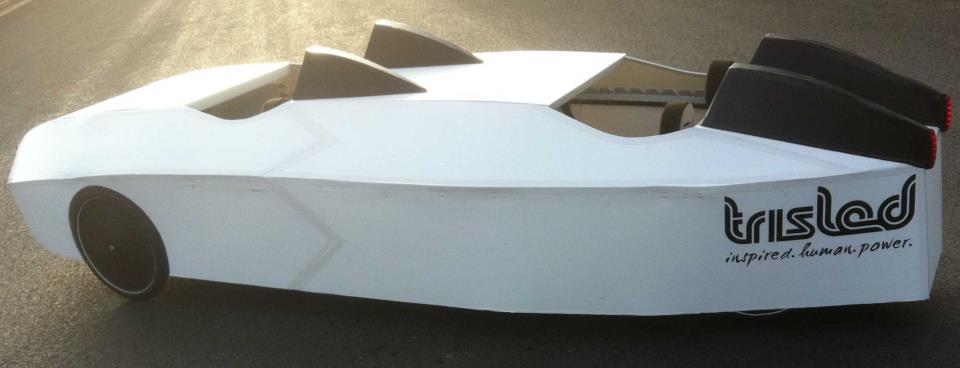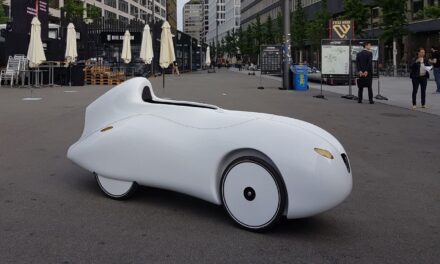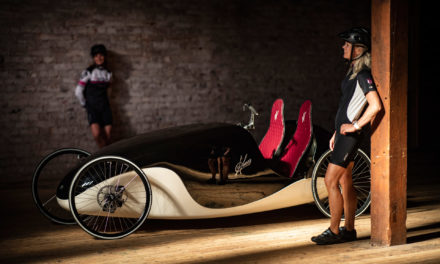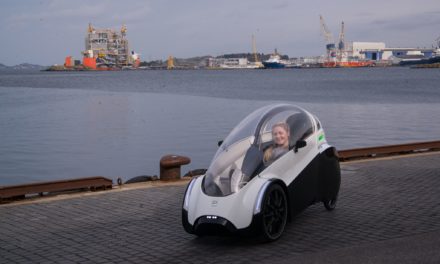The huge expansion of e-bikes and especially the associated development of electric motors brought new unexpected opportunities to the older generation of cyclists. But even the younger ones enjoy all kinds of fun or practicality of e-bikes. And speaking of the practical side of things, perhaps everyone has already had to notice electric cargo bikes and their rapid development, especially in Western Europe. However, another wave of new machines is slowly coming to us, which can largely change the way we travel short distances around the city or between nearby villages on the way to work or shopping. These are partly or fully-faired e-bikes that stand on the border between the bike and the car. Several such products are finally being launched this year and their producers suppose to start their serial production. The good thing is that the designers have already realized that there exists a much more comfortable riding position than on an upright bike, so most of the new vehicles are recumbents, in fact.
The gap between the bike and the car
If we look at the means of transport that you can use for short distances, in addition to walking as such, these are kick-bikes and bicycles, whether electric or acoustic (or if you want a “bio version” or simply non-electric). These are very agile vehicles that can only move one, exceptionally two people. Next are cargo bikes, which are already electric in most cases today, and which can easily take two or more children or one adult in addition to the cyclist him/herself. And then there is a huge gap in this overview because the next following vehicle, .we only have a car. A car that weighs hundreds of kilograms/pounds takes up a lot of space, can drive at huge speeds, requires safety features and deformation zones, has to stay on streets, is vulnerable to traffic jams, and lack of parking spaces. At the same time, mostly just one or two people ride in it. Yes, we still have the so-called LEV, ie. Light Electric Vehicles, such as the Renault Twizy, but they still have to stay on the roads. They are huge in comparison with the bike and mostly use car parts. After all, Twizy, for example, weighs 450 kg / 992 pounds. There is simply a room for very light vehicles, which would be built based on bicycles rather than cars and which would be able to use bike paths under the rules for bicycles or e-bikes. Of course, provided that all the necessary certifications, restrictions, and rules are followed. Their advantage for their users would be, above all, the ability to ride on bike paths and in places where cars cannot go, and thus avoid traffic jams. At the same time, they would provide passengers with sufficient protection against adverse weather conditions. It is no surprise that the lack of protection from rain or snow is one of several key reasons people do not use bicycles to commute.

SO HOW SUCH A VEHICLE MIGHT LOOK LIKE?
As already mentioned in the introduction, after many years of development, several similar vehicles are being prepared for production, so we already have a relatively accurate idea of how such a means of transport should look like. In most cases, these are quads equipped with a partial or complete body from plastic, textile, or composite. They provide space for one or two passengers. Sometimes even for one rider and two children. The motor complies with current legislation and, therefore, usually has 250 W and a speed limited to 25 km/h (16 mph). Most of them are being prepared for Europe now, so the limit doesn’t comply with the US standards. BTW: The main reason is that a bicycle has to have three or fewer wheels in most US states and Canada.
The most important dimension of the vehicle is the width, which in most cases is between 80 and 90 cm / 31 and 35″, which is about as much as a standard recumbent trike. So nothing that would fundamentally interfere with the traffic on a bike path. Nor should the length be problematic for other cyclists and the speed complies with current legislation. Most of these vehicles are chain-driven as standard. Still, some very innovative solutions use a pedal-powered generator, and the energy produced is then transmitted to the motor via cables. And, of course, supplemented with battery power. This is relatively inefficient from the energy point of view, but on the other hand, the space efficiency is excellent, as well as the simplicity of the whole system, which eliminates the complex transmission and power distribution to the two rear wheels. Of course, all that, only in case when the manufacturer perfectly manages the electrical side of things, the service, and easy replacement of different drive components. The question of the legality of similar e-bikes arises, which, however, goes beyond the scope of this article.
In addition to quads, three three-wheelers also appear in my overview. However, the main advantage of quads over trikes is their significantly greater stability and the ability to increase the rider’s seating to the car’s level of seating. For tricycles, this would be possible either assuming a wider track, which PEBL, or the Northern Light Motors 428 have, or reducing speed when cornering. Wider wheelbase means restrictions on bike paths and streets in general and lower speed when cornering is difficult to enforce.
Safety
Safety always comes first. And it’s no different with these electric bicycles. Thanks to four wheels, they are very stable even on snow. They are also high enough to be seen in traffic. The speed is basically the same as with a classic bike, but safety is increased by the body or protective frame. This applies both to a possible collision with an obstacle or a collision with a car. From the point of view of pedestrians or other cyclists, such vehicles are also safer for them, because the shape is much more compact and rounded than a standard upright bikes have.
Speed
As already mentioned, the speed is usually limited to 25 km/h (16mph). Some manufacturers are considering the so-called S-Pedelec versions up to 45 km/h (28 mph), i.e., still in the bicycle’s intentions. However, the 45 km/h version won’t be allowed on bike paths. S-Pedelecs require insurance, registration, and driver’s license in the EU. However, it is still a very light vehicle with minimal energy consumption and excellent utility value for the owner. Of course, especially in the case of such small “pedal cars”, a change of regulations and an increase of the maximum speed for e-bikes from today’s European 25 km/h (16 mph) to the American 20 mph, ie. 32 km/h, would be more than welcome.
The question also arises as to how much the rider actually powers such a bike and how much the electric motor powers it. And also whether it would not be better to produce such bicycles as motorcycles, and thus without pedals. In my opinion, no. In such a case, the owner would lose the benefits gained because this means of transport is considered a bicycle. Also, only 250 watts wouldn’t be enough to power them. Likewise, with the S-Pedelec version, 350 W would be a big issue. This performance is sufficient for the transport of the rider him/herself, but if you sit another adult behind you plus some groceries and a larger climb is in your way, you have to get really busy with the pedals. And that’s what it’s about. To have an engine sufficient for common operation and only on special occasions to help the motor significantly by your own power. This is how I imagine efficiency in personal transportation. Not the other way around when a vehicle able to go 200 km/h (130 mph) and transport 5 people usually drive pretty slowly around the city with just the driver inside.
Aesthetics
There have been several different attempts at similar vehicles in the past, but the world hasn’t probably been ready for them yet. At the same time, their design was often the work of amateur designers and followed the production possibilities of their creators rather than an appealing look. Unfortunately, this made them unattractive vehicles with zero “cool factor”. However, the development of velomobiles, which are in our overview, is often funded by serious investors or international companies, and the whole project is viewed from all possible angles. From the construction itself, through the reduction of production costs, management, legislation, marketing to quality design. This makes these machines acceptable, and they have a chance to become a trend and to break through.
Possible development
Every time an innovative approach to an issue emerges, there are many comments that condemn it, looking mainly for disadvantages, problems, and dangers. Few can look at such matters with an open mind. I also often come across an approach where the individual assesses the novelty only with his own lens. The fact that someone lives in the middle of New York City and cannot imagine such a vehicle in traffic does not mean that many other people living in villages and commuting to towns would not be able to use a similar means of transport. I can also imagine that it would be very unpleasant for an ordinary cyclist to zigzag among hundreds of such very light electric vehicles on the bike path. Also, the idea that thousands of them are parked on the sidewalks and in the basements is not pleasant at all. However, I don’t see such catastrophe happening in the near future. Currently, companies are registering pre-orders for thousands of these large e-bikes from around the world, so development will be gradual. And if there will be a significant expansion, changes would have to follow inevitably. At the expense of lanes and parking spaces for cars, wider cycle lanes and parking spaces for these bikes could be created. As fewer people would drive, but more people would cycle. By the way, about three such e-bikes could fit in a normal car parking space, and two lanes for any bicycle traffic could be created from one lane for cars. After all, a pandemic has shown us in many cities around the world that such a change is surprisingly quickly possible.
Current situation
Today, however, we are only at the beginning, and even though everything seems promising, completely different scenarios may occur. Cities can start to promote shared cars on a large scale or make public transport even more accessible, and everything will develop differently. On the other hand, the 100 years-long evolution of cars has already shown that the opportunity of owning a means of transport, which gives you enormous freedom of movement, is something that people are willing to pay a lot of money for. The future for similar light electric vehicles is therefore open.
The fact that we are still at the very beginning is also described by the fact that not a single clear name has been created for them yet. They are often called velomobiles, but unlike real velomobiles, which are light, very aerodynamic, mostly sports-based, and in the vast majority of cases without a motor, these machines look more like whales. Likewise, the designation as LEVs, is not entirely appropriate, because a normal LEV is more of a car than a bicycle. And also the austere name of the e-bike does not completely correspond to reality.
So let’s take a look at projects that are already nearing production or that can already be purchased. In the following part of the article, I will describe details of 12 interesting veLEV (VEry Light Electric Vehicles or VELo Electric Vehicles) projects.
A comprehensive list of veLEVs:
- PodRide
- PodBike Frikar
- CityQ
- IRIS eTrike
- quadVelo
- DryCycle
- Schaeffler Bio-Hybrid
- PEBLE
- Pedilio
- Virtue Cycles Pedalist
- Canyon Future Mobility Concept
- Nothern Light Motors 428
You have read about 20% of the article
If you want to read the full article, you have to be a Premium Member.
⭐️ Become a Premium Member! ⭐️
Are you Premium Member? Just Log-in!

